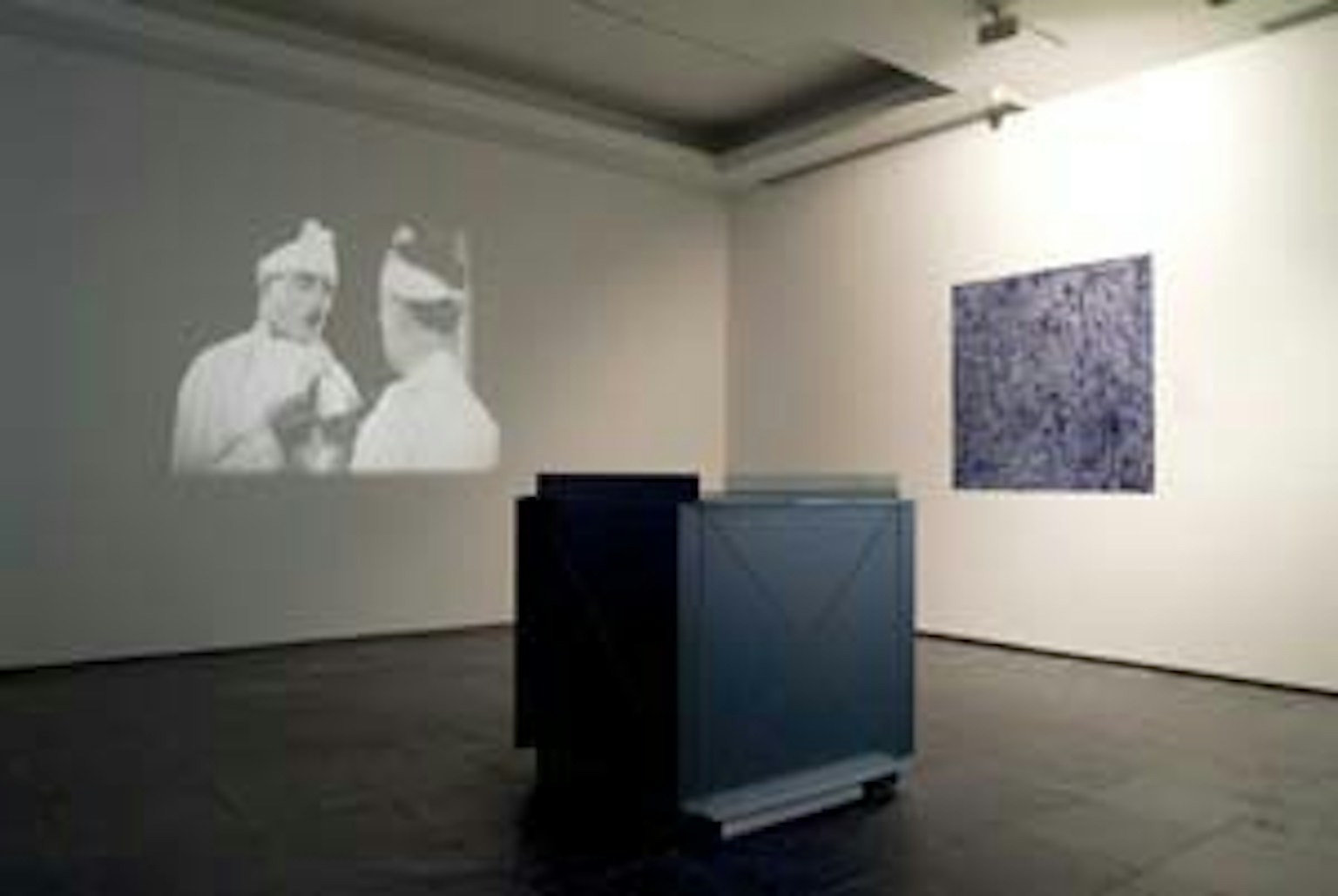At the end of 2008 Michel François had received carte blanche from the S.M.A.K. to determine the exhibition programme in two galleries for more than a year.
François chose two identical exhibition rooms and named his project Faux Jumeaux (false twins). He asked 15 people to each select two works of art which, although very similar with regard to form or material, were created independently. Which similarities or differences between the two works come to light when ‘mirrored’ in the two identical galleries?
This project, ‘In the Name of Colour’ is part of an exhibition, ‘False Twins’, which explores the serendipitous identity of art works; where art works or aspects of art works, by different artists have a formal or conceptual identity with one another, but have been created independently of one another, i.e. without reference to one another. My interest in the project "In the Name of Colour" is to explore the parallel between the invention and naming of pictorial colour by the French artist, Yves Klein (1928-1962) and the Mexican artist, Gerald Murillo (1875-1964) also known as Dr Atl. Both artists expressed authorship through the creation and naming of pictorial colour. In other words, by developing formulas for producing pictorial colour and naming these colours with reference to their personal names, and using these colours in their own paintings. As is well-known, Yves Klein invented and used the distinctive, deep blue colour, ‘International Klein Blue’ or IKB in a wide range of works, including his monochrome paintings and Anthropometries from the late 1950s.
Klein created IKB with chemists in order to have the same intensity as dry pigments, but achieved by suspending dry pigment in a clear, synthetic resin. Gerald Murillo who signed his paintings, Dr Atl, developed a range of colours, derived from a solid resin pigment but applied to canvas like a wax-crayon, known as ‘Atl-colours’. From the 1930s to his death, he used Atl-colours in his landscape paintings and mystical paintings of volcanoes. My proposal for the exhibition is simple: it is to paint in one room, a wall using IKB and another wall using blue ‘Atlcolour’. On the wall painted IKB, I will exhibit a copy of the patent that Yves Klein registered in France in 1957 to legally protect IKB. The creation of this patent, by IKB has been a legendary part of the identity of IKB. On the wall painting in the Atlcolour blue, I will display a copy of the formula for producing Atl-colours as described by Dr Atl. As well as exploring relationships between the invention and naming of colour and artistic authorship, the exhibition also indirectly points to the parallel between the legal system of patents and the system of originality in the art world. Patents are legal monopolies that protect inventions which can be (industrially) applied to articles for a limited period of time (e.g. twenty five years), from use by other people. A patent must be registered in order to be protected and cannot be identical to or substantially similar to an existing patent. Once the patent is registered and disclosed to the world, it cannot be used by third parties, even if the same patent is arrived at independently, i.e. without copying. In a sense, once an artist has created an art work, and it has its place in art history, it is a bit like a patent. It is difficult for other artists to use the same or similar idea, or technique for a work, because the art world is aware (like patents) of the existing art works which precede it.
Proposition 1 - Michel François Proposition 2 - Loïc Vanderstichelen Proposition 4 - Yves Brochard Proposition 5 - Guillaume Désanges Proposition 6 - Laurent Jacob Proposition 7 - Raya Lindberg Proposition 8 - Hans Theys Proposition 9 - Frank Maes Proposition 10 - Philippe Van Cauteren Proposition 11 - Rainier Lericolais Proposition 12 - Christine Macel Proposition 13 - François Curlet Proposition 14 - Joël Benzakin Proposition 15 - Lea Gauthier Proposition 16 - Jean-Paul Jacquet

